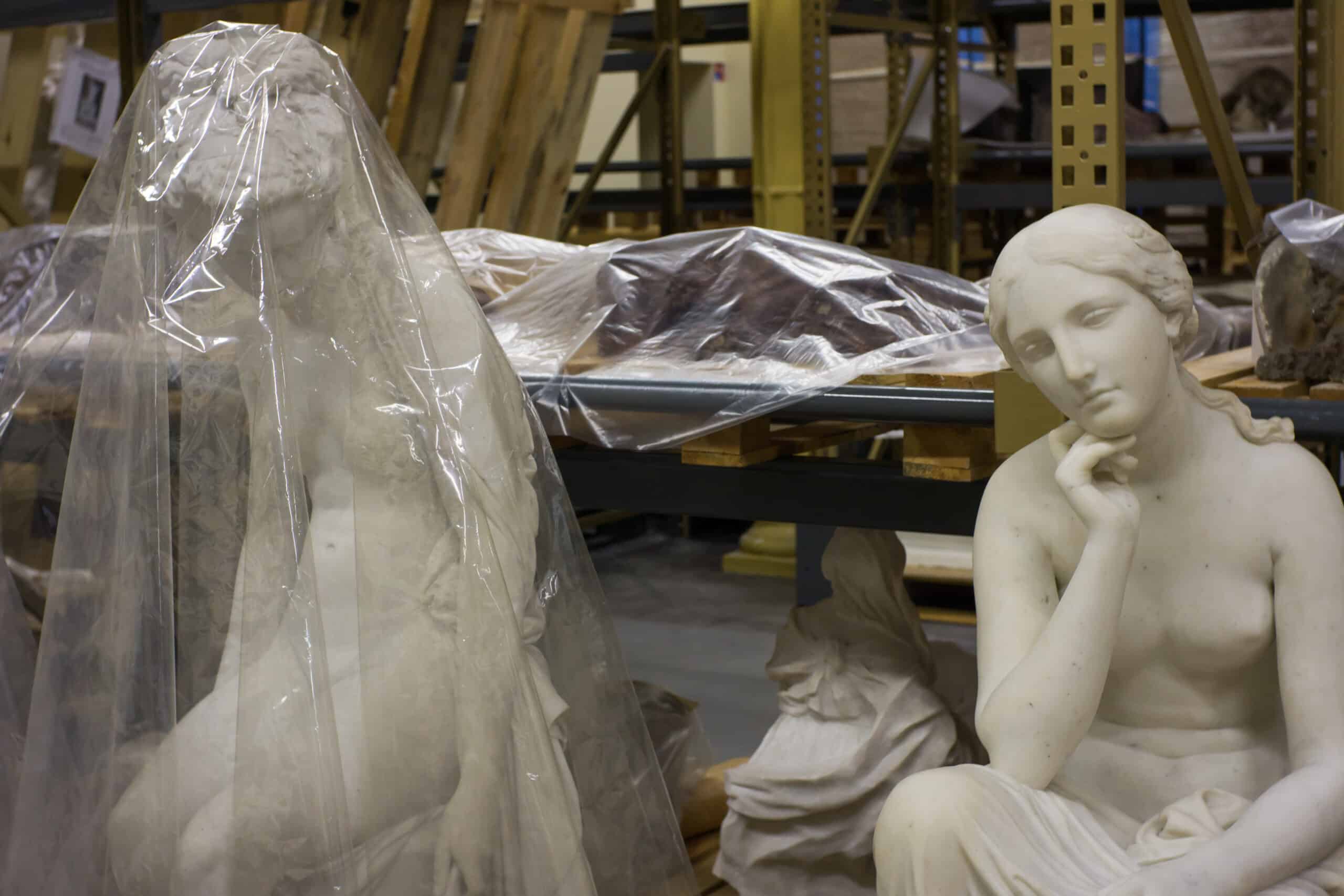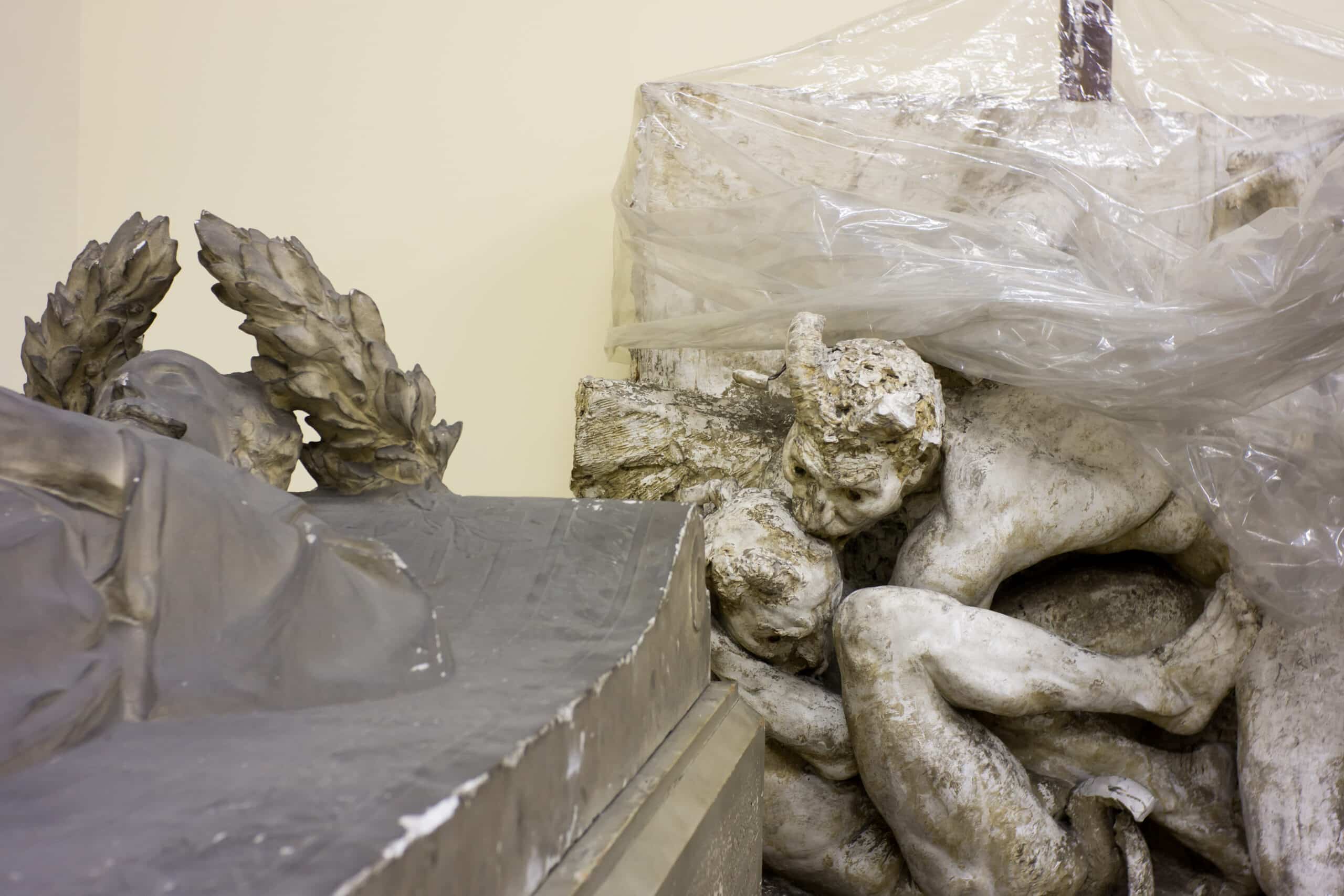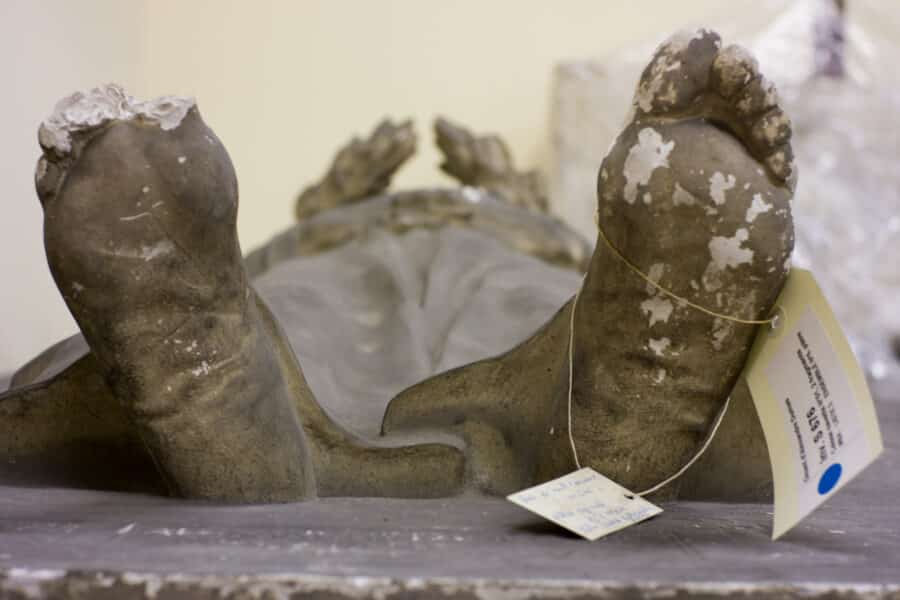The museum — which etymologically means a temple dedicated to the muses — is a “system” whose key purpose is the least obvious: that of putting together collections, storing them in storage rooms, preserving them, and when the opportunity arises, loaning them out. The key function of a museum is that of “keeper”. The curators, those who plan exhibitions, manage their display, and their promotion, come afterwards. A museum that has closed its doors to the public still remains a museum.
There is a great tendency to think of museums as places that are, if not dusty, frozen in time at least, imbued with, including in their exhibition methods, a certain opposition to change, concerned with conservatism and durability, “patrimonialisateurs” (institutions dedicated to making objects part of the national heritage), destined to last for centuries. The behind-the-scenes reality is quite different, with a hive of constant activity. The works come and go. Their travels take them to a restorer’s table, an exhibition room that is nearby or far away, to the other side of the world. By virtue of a diplomatic principle of aesthetic solidarity that transcends borders and of “international cultural diffusion”, there is a procession of entries and exits. The labels that sometimes accumulate on the back of the paintings, or attached wherever possible to the sculptures, are proof of this.

The utmost care with which these works of art are handled is deeply touching. But in contrast, it remains shocking that the love of art can be accompanied by contempt for those who have created it. And thus I come to my subject: is there some element within our dominant representations of art that can justify the plundering, the seizing, the dodgy deals, the misappropriations? Yes, the collectors of African, Native American and Oceanian art have maintained. Yes, because the indigenous people who create them are unaware of their aesthetic value. Beauty is a notion that is foreign to them. By collecting, labelling, preserving and exhibiting the artifacts that they generally reserve for ordinary usage, we bestow upon them a quality of “artistic meaning” that they lacked at the outset. Once incorporated into a collection or exhibited in a display case, such utensils or talismans, which otherwise would have been used and then thrown onto the fire, finally accede to their truth.
Fundamentally, art would be detachable. It becomes Art with a capital A by the very virtue of the decontextualization of which it is the object. The value of art (or “artistic meaning” or the “art coefficient”) whether it refers to the artistic quality, or on the side of the recipient, the aesthetic, would be evidenced by the fact that certain properties of the works would be exalted by their separation from the places, the people, and the artists from where they originate, and would flourish all the more in being appreciated for themselves. Theories of the autonomy of art (of which the first draft is often attributed to the philosopher, Emmanuel Kant) would thus justify that the works be dissociated from the material and cultural conditions of their production, to end up framed, isolated, statufied, placed in the famous “white cube” (or its equivalent) which contemporary art still relies upon, — sometimes including for installations, performances and participation. These theories would justify for example, such a staggering act of brutality as the extraction from the Parthenon in Athens of a part of the frieze that decorated its inner building. This took place from 1801 onwards, by virtue of an initiative of the British ambassador, Lord Elgin, who then had the marbles shipped to London, where the rest of the bas-reliefs would later join them. For two centuries, Greece has been demanding the return of this major work of art, which it considers as having been plundered from the country, and so far, Britain has refused.
The arguments mustered by each side are emblematic of the difficulties that the restitution of plundered works is plagued by. First and foremost, were they plundered? Greece asserts that this is the case, since it was under Ottoman rule at the time, Britain denies this. And then, on what grounds exactly should they be restituted? On the Greek side, they claim legitimate ownership. They speak in the name of national identity, historical heritage, of the Nation, more than out of esteem for the temple and its environment in themselves. The British, on the other hand, take inspiration from the notion of “world heritage sites of humanity”, coined by UNESCO to claim a transcendence of the work with regards to the different aspects of its localisation and to affirm its universal value. Appropriation on one side, universalism on the other. The reduction of a work to express (by virtue of a mysterious operation? ) the spirit of a nation on the one hand, and the dissociation of the work from its specific historicity on the other. In more political terms, communitarianism versus liberalism.
The Sculpture dedicated to the god, Gou, provides another example which testifies to the complexity of heritage claims. This iron statue, to which magical warrior powers are attributed, was created circa 1858 by the artist, Ekplékendo Akati in Abomey, in the Kingdom of Dahomey. It was seized by French colonial troops in 1894, who took it back to France, where it has done the rounds of the museums in Paris. And, not only was this sculpture stolen by the king of the Dahomet Glélé, a bloodthirsty local slave master, known for having carried out numerous human sacrifices, but the sculptor himself was captured and deported from his home town of Doumé1. Despite the demands for its return, this highly unique sculpture still resides today in a branch of the Quai Branly museum, the Pavillon des Sessions, in Paris. Maybe because of the fact that it has become an “icon” from which Picasso and Apollinaire have drawn their inspiration, contrary to expectations, it wasn’t included in the consignment of 26 objects which were recently restituted to Benin by France. Knowing its history, would we take the official statements that accompanied the inauguration of the first exhibition of the treasure recovered in Cotonou seriously, if it had been among them? Could we find credible the idea that this exhibition expresses, as declared by the Beninese Minister of Culture, “pride and faith in who we were, who we are and who we will be” and that it is “the catalyst for national unity”? That “This is revealing Benin2.” ?

Restitution is an act that directly calls into question the nature of works of art and their connection with their environments that give them their meaning and value. We would like the original to remain in its point of origin. Which can be understood on various levels: because the original “owes” something to its origin, or because the original can only be activated by its original functions (the god, Gou, as is happens, must be fed by the people who revere him to exercise his powers) , or also because the origin would form the only viable ecosystem for the original, without which it would lose all of its value etc.
As for those supporters of an art that is autonomised in respect to its local conditions of production and meaning, could they be satisfied with reproductions or copies (with such extraordinary progress in this field having been made)? Absolutely not. From their point of view, the original is all the more essential once detached from its place of creation, as it becomes truly irreplaceable. It is in the original, and nowhere else, that the fundamental characteristics of its initial environment are condensed: the original masterpiece totalises them while at the same time transcending them. Similarly for Hegel, the work of art is bound to express, or better, to embody, the spirit of a people, and it is within the public recognition of this embodiment that its moment of truth and its universality can be found. The aesthetic detaches itself from the ethnic.
“In even the most perfect reproduction of a work of art, one thing is lacking: the hic et nunc – its unique existence in a particular place”, wrote Walter Benjamin. “It is this unique existence, however, and nothing else, that bears the mark of the history to which the work has been subject3.” Does this fine quotation bring any solution? The place of the work of art being the place where it resides, it is of no importance, one is tempted to say, whether it is here or there, whether it stays where it is or it moves. On the other hand, the identical, or almost identical, reproduction of a missing work of art (because it has been stolen or restituted) violates the historicity of the work in question. It no longer bears “the work of history”, that is to say the qualities that is has continuously acquired by means of its physical evolution, such as a patina, or the ways in which it is celebrated, appreciated, brought to life, discussed, etc. What comprises the originality of a work of art is thus not its origin to which it could be reduced or belong to, but its history that has brought it here and there, nearby and far away, sometimes in the hold of airplanes or of ships, sometimes in the bags of an artist who has been taken prisoner. Wouldn’t the most important thing be that the work is neither destroyed nor monopolised, but that on the contrary it has benefited from a situation?
For example, even though numerous difficulties persist, Quebec’s procedures in repatriating indigenous objects offers bright prospects: the “collaborative museology” that is gradually being put into place following discussions, some of which date back 20 years, paves the way for a middle ground between the original original and the original from nowhere. How to include the indigenous people in the design of exhibitions, even in the building of new museums, how to “de-colonise” the museal institution? One asks oneself. Where is the meeting point between the traditional native usage of the artifacts and the matter of their conservation? How can we make compatible the way in which the plundered communities view their collected objects and the system of the museum, whose episteme tends to dissociate their aesthetic value from their religious value? These are just a few of the many issues4. But maybe there lies a solution in the answer which consists in saying: let us make the museum, — which the indigenous people, just like the Beninese and many others, generally hold dear, because they now view it as an ambassador of their own culture and a place for discussion which allows them to better identify this culture, and even revive it —, let us make the museum the keeper of the works that are collected there, and not their irrevocable owner, that it has claimed to be.
Joëlle Zask
Translated by Jacqui Chappell
1 Maureen Murphy, « Du champ de bataille au musée : les tribulations d’une sculpture fon », dans Histoire de l’art et anthropologie, Paris, coédition INHA / musée du quai Branly (« Les actes »), 2009, [lire en ligne (archive)]
2 Restitution of 26 works to the Republic of Benin, Musée du Quai Branly, 2021 [read online]
3 Walter Benjamin, Walter Benjamin, “The Work of Art in the Age of Its Technological Reproducibility”. Translated by Michael W. Jennings, Harvard University Press, 2008
4 See for example https://doi.org/10.7202/1053709ar
